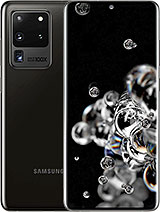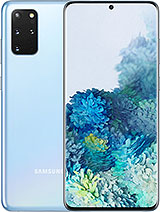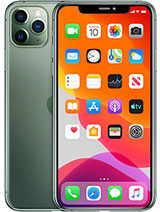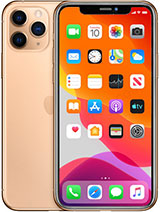Samsung Galaxy S20 Ultra vs iPhone 11 Pro Max Camera Test Comparison By Danny Winget
All right so here we go. This is the camera comparison that you have been waiting for: the brand-new Samsung Galaxy s, 20 altar versus the iPhone 11 Pro Mac, so you're, looking at the 4k front-facing video right now, let me know which one looks better. Let me know which microphone sounds better and then today, what I'm going to do is go out and take pictures and video in every condition possible to see which one is the best and which one should be in your pocket in 2020. Let's see if that 108 megapixel camera, which is insane on the s20 ultra, actually makes a difference. Let's see who's going to be the camera King in 2020. Let's do it before we get started.
Let's talk about the testing process. All of these pictures are taken on auto mode, with no edits straight out of the camera. I feel like this represents the average consumer best. The iPhone has smart HDR and deep fusion enabled, and the s20 ultra has seen detection on since its optimized to take the best photos on auto. But the great thing is that the s20 ultra has a pro mode built into the camera software.
So if you have time to dial in that perfect shot, you can with manual controls. Let's start with daytime. They are both great, and you can't go wrong with either they both have fantastic dynamic range, nice, colors and capture lots of detail. This comparison is a little different because Samsung has a giant 108 megapixel sensor. So let's talk about that.
First, you can take straight-up, 108 megapixel shots by choosing this mode, or you can choose a pixel bin shot at 12 megapixels that combines 9 pixels into one giving you the best balanced shot. So here are the differences in these two modes. When you take a hundred and eight megapixel shot, it usually results in the brighter overall picture with more natural colors, but it does lend to more highlight clipping. Sometimes dynamic range suffers and HDR just doesn't come on when it should. So generally, you will see the 180 megapixel, giving the brighter shot.
That is more edit friendly than the 12 megapixel version. The advantage of the hundred eight megapixels is just the sheer resolution here. It is on 1000% scale. Look at how much detail there is still in the castle and at 400% scale. The iPhone actually keeps up very well.
It's surprising how much detail the iPhone is able to capture, but let's go crazy and do two thousand percent scale look at how much detail is still there with Mickey it's insane and at three thousand percent scale. You can still make out the details with no issue on the s20 ultra and the iPhone is now just a blurry mess. So I hope this shows you the power of a hundred and eight megapixels. You can wreak shop a super wide shot into anything. You want with plenty of detail its next level when doing this comparison, I was really surprised at iPhones diffusion.
It's really great at capturing detail. Here are some examples of a hundred eight megapixels versus the iPhone at four hundred percent scale, a crop level that most people would use, and I'm really surprised to see how well it kept up it's when you go beyond the 1000% is where you really see the difference, they're, just both awesome on a one hundred and eight megapixel mode. You can't access any of the other focal links or zooms, but on the 12 megapixel mode, you have access to that incredible.100 times zoom the iPhone can zoom to X with the telephoto, where the ultra that falls to 5x. The iPhone goes up to 10x digital zoom, but the ultra does a 10x hybrid zoom. So you can see how much more detail there is.
Even at 10x you'll probably never use this 100 times zoom, but it's impressive that this is on a smartphone. The 10x and 30x are usable, but once you get to a hundred times it looks pretty bad. In general, the galaxy s 20 ultra has a more contrast. Ii shot almost giving it a stylistic look the best way to explain it is. If you put a slight filter on it, boosting the highlights is not a bad look at all, but from a technical standpoint, Apple Smart HDR produces the more balanced shot in most instances, in my opinion, with a more balanced approach of highlight, preservation and overall dynamic range.
This is a preference thing for sure. So, I don't blame you if you like the s20 ultra shots better, but from a technical standpoint, I'm sure you guys analyzing all these pictures, you would agree. It doesn't happen on every shot, of course, but in general this is what I noticed. The 40 megapixel selfie camera is impressive. From Samsung this year, great detail, I think they've improved the skin tones and exposures of the face so happy.
The skin smoothing is not aggressive. It remains nice and sharp, and even on the front-facing portrait mode, I think it does a better job, so props the Samsung on this. They have a new selfie tone feature where you can preset your color temperature. It's not a huge difference, but it's nice to have when it comes to portrait mode on human subjects. This is going to be preference based.
Samsung's processing tends to brighten the skin, which I think some people will like where the iPhone is balancing the shot entirely across the entire image. When it comes to objects, they both do a very nice job as well nice edge detection and natural background separation. On this more challenging shot. The iPhone did a better job with edge detection, basically perfect around the hands and the sharpness is maintained all around the subject, but the exposure is so much nicer on the s20 ultra shot, even without portrait mode. The s20 ultra has some of the best depth of field that I've seen from a mobile sensor.
The iPhone is no slouch either, but the bigger sensor size on the ultra really shows even in daylight. Look at that natural background blur. The separation is fantastic, I'm really impressed with this type of okay without any special modes. It really has DSLR, like properties with a very narrow focal point, but that's where I feel like the s20 ultra needs some work in a software update, the focus could be sharper on subjects and in the entire frame, excluding landscape shots. You can add sharpness in posts.
So it's not a huge dealbreaker, but a lot of shots end up softer than I would like it. Just look at Ariel's face here way: more detailed on the iPhone, and after looking at over 300 images side by side, you can clearly see a detail difference on some shots. This macro shot shows the same thing. In fact, the closer you get, the softer the shot gets, so I just wanted to point that out. I had some focus issues where sometimes it just doesn't focus no matter where you tap to focus, but this is final launch software on the March security patch definitely can be fixing a software update, though, and if you know Samsung at all, they will push out a larger camera update in the next few months.
So I will revisit this comparison. When that happens, because I think it's going to make a big difference in terms of 4k video. Both of these phones can shoot up to 60 frames per second, which is great. Here's a walking stabilization test, both very natural with optical image. Stabilization, let me which one, you think looks better.
The s20 ultra does have an improved super, steady mode which down scales to 1080p, but is mind-blowing with the stabilization. This is me running as fast as I could look like it's on. A gimbals I will leave that link to that full video here. If you want to check out that comparison, it's pretty crazy. The Galaxy, S 20 ultra has an incredible video feature where you can shoot a 8k resolution.
This is insane that we can do this on a mobile phone. It is limited to 24 frames per second, so I didn't include it here, but I will leave a link to my 8k video samples, so you can check it out. Slow motion in 1080p here, 240 frames per second, which is what most people would use. They both look good and about the same where you want to get crazy is with the 960 frames per second super slo-mo. If you want that, you're going to have to go with the galaxy s, 20 ultra, so much to cover here.
I didn't take many ultra-wide shots. They both have great ultra-wide cameras during the day they are both nice and having that ultra-wide and 4k video is so great with stabilization on both you can capture so much more like this and is one of the most useful angles to have on a smartphone at night, though it's a different story so stay tuned for that, let's go ahead and get to what you have been waiting for, and that is the low-light performance. The same applies here with the 108 megapixel shots versus the 12 megapixel bin shots even at night highlight preservation and overall balance is better with the 12 megapixel shot, so I will shoot 12 megapixels at night I thought there will be more noise with the hundred and eight megapixel shots, but I am impressed. The noise level is very comparable. Overall, the bigger sensor shows on the galaxy s, 20 Ultra usually producing the brighter picture.
It does go back and forth, sometimes where the iPhone takes the brighter picture, but they both produce images with great contrast and sharpness. The s20 ultra usually deepens the blacks, with more contrast for a more dramatic look, usually with more saturation, but then again it does go back and forth. Both phones have a night mode, so I took one shot regular and one with the night mode they'll be listed on, which is which down below incredible amounts of detail. On both cameras, the sharpness is really unbelievable. Mobile sensors have come a long way.
I would say that the s20 ultra leans towards the warmer side of white balance when night mode is triggered, and the ultra does have some slight over sharpening happening, which I would like Samsung to tone down on a little, but I think the average user will lean towards the ultra, because it really does look incredibly sharp. The clarity is a real, tangible result. People will notice, especially with the ultra-wide it is so much sharper on the s20 ultra. It is no contest whatsoever, and then you add the night mode to the ultra-wide shots which the iPhone 11 Pro max does not have, and it just looks embarrassing. I really hope Apple adds night mode soon to their ultra-wide camera and a software update.
It is needed for sure red is still one of the hardest colors to replicate at night for a mobile sensor and I still think the iPhone. Does it better. The red still looks washed out on this coca-cola building. It is a little better with night mode, but it still doesn't match. The iPhone here does have less shadow detail for sure, but I think it's the more pleasing shot overall on night mode.
Here is an example of Samsung's over sharpening where it creates a halo effect on the sign with over saturation the nighttime. Video on 4k is really no contest. The s20 ultra again really showing that sensor size flex with letting in more light. The potential is there, but the amount of noise is something they need to work on. The iPhone video remains sharper with more detail under these lighting conditions and then, when you start walking, you can really see how the s20 Ultra is struggling.
There's lots of smearing and don't get me wrong. The iPhones doesn't look phenomenal either, but there's definitely a clear difference here. Here's an example of the different lighting scenario where a band was playing. If you crop into the sky, you can see a clear difference on noise reduction, so Samsung, if you're watching this, please fix this as fast as you can. The microns are only 0.8 on this sensor, so it could be a limitation of hardware, but I'd like to see some better noise reduction applied here. I saw focusing issues at night as well, like I saw during the day, but depth of field.
Again super impressive on the s20 ultra I'm surprised to see the zoom actually works in low-light, it's not as bad as I thought it would be, but that hunter time zoom looks like an oil painting. All you selfie takers, you're, going to love these tons of improvement here at night, regular selfies, look fantastic, especially in the bin mode. You can take 40 megapixel shots if you want to the night mode for the front-facing camera on the ultra makes this unfair. Just look at the details on the s20 ultra no denying the winner here. The sharpness is impressive.
Determining a winner is really hard right now, because I feel like a lot of these things, that I'm, pointing out with Samsung's processing, can be fixed with a software update. But I want to know from you guys, which one of these phones won this round. The daytime shots are more balanced with the iPhone, but you can't deny the awesome depth of field and the sheer resolution of 108 megapixels. So during the day, I could give it to the Samsung, but at night I feel like they both do very well, but the Samsung does have the advantage of white angle, night mode and sharper details. The iPhone does better nighttime, video for sure, with less noise, but the selfies are so much better on the galaxy s xx ultra, so you could argue it either way if I had to pick just one camera, that's really hard to do, but I want to break it down like this I think that if you're taking mostly stills, then you should probably look at the galaxy s.20 ultra, but if you're looking at video I would probably still pick the iPhone, because, even though you have a cave recording on the s20 ultra before k is definitely better still better dynamic range I think it's overall, better video with less noise, especially at night. But honestly, it really doesn't matter what you pick here.
It is all gonna, be personal preference, and the comments are going to reflect that they are both. So damn good, it really doesn't matter. So let me know in the comments below: let's have a discussion down there. Let's put all fanboys and fangirls ism aside and just look at the images it doesn't matter who you like better. Let the images and video do the talking.
Thank you for watching this there's a lot more coverage on the channel, so it makes you subscribe hit that like button, if you enjoyed this and I, will see you in the next comparison.
Source : Danny Winget





























